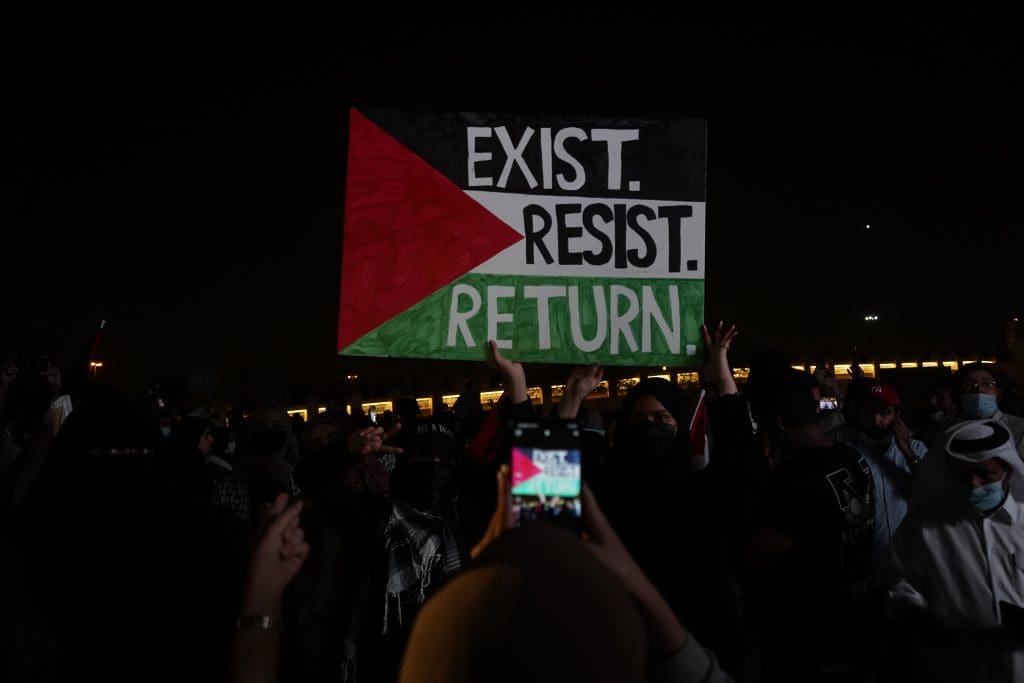
Maha Nassar, University of Arizona
Israeli troops withdrew from Jenin on July 4, 2023, after two days of heavy aerial bombardment and ground invasion. According to reports, 12 Palestinians were killed and over 100 wounded in what the Israeli military described as a “counter-terrorism operation”. One Israeli soldier was also reportedly killed.
The site of the latest confrontation is not new. The Jenin refugee camp, on the western edge of the town of Jenin in the north of the occupied West Bank, has often experienced violence between Israeli soldiers and Palestinian militants.
On July 3, the Israeli government said it needed to enter Jenin to arrest militants it accuses of terrorism, with Prime Minister Benjamin Netanyahu warning that the operation would not be a “one-time action.”
As a scholar of Palestinian history, I see this recent episode as the latest chapter in a much longer history of Palestinian displacement and defiance of Israeli occupation. Understanding this history helps explain why the Jenin camp in particular has become a center of Palestinian militant resistance.
Camp conditions
Jenin, an agricultural town that dates back to ancient times, has long been a center of Palestinian resistance. During the 1948 Arab-Israeli War, Arab fighters successfully pushed back Israeli attempts to capture the town.
At the end of that war, the town became a refuge for some of hundreds of thousands of Palestinian refugees who fled or were expelled from lands that became part of Israel. Jenin, along with the hilly interior of Palestine known as the West Bank, was annexed by Jordan.
The UN Relief and Works Agency established the Jenin camp in 1953, just west of the city. Since then, the agency has provided basic services to the camp’s residents, including food, housing and education.
Camp conditions have always been difficult. In the early years of the camp, refugees had to stand in long lines to receive food rations, and for decades their cramped homes lacked electricity or running water.
The Jenin camp soon became the poorest and most densely populated of the West Bank’s 19 refugee camps. And given its location near the “Green Line” – the armistice line that serves as Israel’s de facto border – camp residents who were expelled from northern Palestine could actually see the homes and villages from which they were expelled. But they were prevented from returning to them.
The rise of militancy
Since 1967, Jenin, along with the rest of the West Bank, has been occupied by the Israeli military.
The Israeli occupation of Jenin compounded the difficulties of these refugees. As stateless Palestinians, they couldn’t return home. But under Israeli occupation, they couldn’t live freely in Jenin, either. Human rights groups have long documented what has been described as “systematic oppression,” which includes discriminatory land seizures, forced evictions and travel restrictions.
Seeing no other path forward, many of the camp’s young refugees turned to armed resistance.
In the 1980s, groups such as the Black Panthers, which was affiliated with the Palestinian nationalist Fatah organization, launched attacks on Israeli targets in an effort to end the occupation and liberate what they saw as their lands. Throughout the first intifada – a Palestinian uprising lasting from 1987 to 1993 – the Israeli army raided the Jenin camp many times, seeking to arrest members of militant groups. In the process, Israeli forces also sometimes demolished family members’ homes and arrested relatives. Such acts of apparent collective punishment reinforced the idea for many Palestinians that the Israeli occupation could only be ended by force.
The Oslo peace process of the 1990s – which consisted of a series of meetings between Israeli government and Palestinian representatives – led some former militants to hope that the occupation could be ended through negotiations instead. But Jenin’s camp residents remained marginalized in the West Bank and sealed off from Israel, seeing little improvement in their lives, even after the transfer of administrative powers from Israel to the Palestinian Authority in 1995.
Independent projects like the The Freedom Theater provided some relief to the camp’s refugee children, but it was not enough to overcome the grinding poverty and violence they faced. By the time the second intifada broke out in 2000, many of the camp’s teenagers joined militant groups. That included Freedom Theater co-founder Zakaria Zubeidi, who joined the Fatah-affiliated Al-Aqsa Martyrs Brigade. Like the youth of the 1980s, they, too, concluded that only armed resistance would bring an end to the occupation.
A cycle of violence?
In April 2002 the Israeli army invaded the Jenin camp, hoping to put an end to such armed groups. There were fierce clashes between Israeli soldiers and young Palestinian men in the camp, solidifying Jenin’s reputation among Palestinians as “the capital of the resistance.”
The lack of progress on peace talks since then, Israel’s illegal settlement building on occupied land, and the inclusion of hard-line Israeli politicians in the government have exacerbated resentment in the camp. Polls show Palestinians increasingly support armed resistance.
Seemingly alarmed by the increase in militancy and the stockpiling of weapons in the camp, Israel dramatically stepped up its raids into the camp in 2022. It was during such a raid that Palestinian American journalist Shireen Abu Akleh was killed by an Israeli soldier.
The latest raid, as many journalists have noted, may be the biggest operation in the camp in 20 years. But it was built on decades of resistance and militant defiance that will, I believe, only increase with the latest deaths and destruction.
Maha Nassar, Associate Professor in the School of Middle Eastern and North African Studies, University of Arizona
This article is republished from The Conversation under a Creative Commons license. Read the original article.



